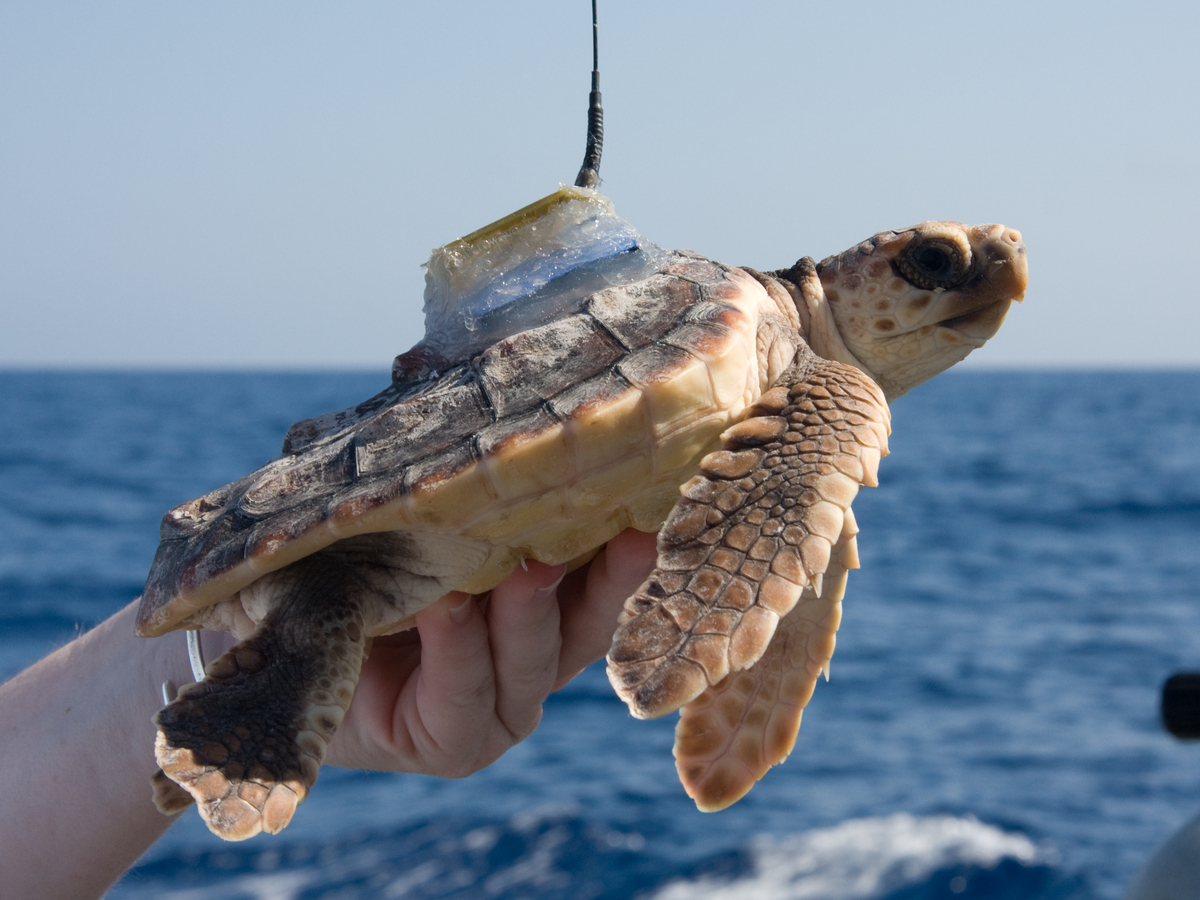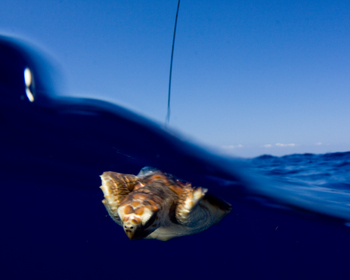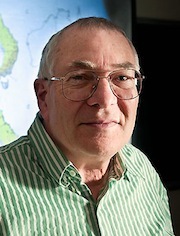Baby sea turtles spend ‘lost years’ in warm blankets of seaweed

Researchers tracking young loggerhead sea turtles with shell-mounted satellite transmitters have found the turtles making homes in seaweed mats that provide metabolism-boosting warmth, food and shelter.
Photos courtesy of Jim Abernethy, NMFS permit 1551
Nosing their way out of eggs buried in sandy beaches from Florida’s east coast north into the Carolinas, baby loggerhead sea turtles race to the water as fast as their flippers will carry them and begin a swim frenzy to clear the predator-rich shore.
And then they disappear. So little is known about what happens between the ocean escape of two-inch-long infant turtles and the return, years later, of larger juveniles to coastal waters, the period is often called the “lost years.”
But the littlest loggerheads are lost no more, thanks to a study published today in Proceedings of the Royal Society B, and the new knowledge may help provide better protection for threatened and endangered sea turtle species.
Researchers at the University of Central Florida — with the help of University of Wisconsin–Madison zoologist Warren Porter and other collaborators — tracked with satellite transmitters the movements of 17 neonate turtles from dozens to hundreds of days across hundreds to thousands of miles of the Atlantic Ocean.

Newly tagged with a satellite transmitter, a baby loggerhead sea turtle swims into the Gulf Stream and a period of its young lifelong known as the “lost years.”
“Before this study, most of the scientific information about the early life history of sea turtles was inferred through genetics studies, opportunistic sightings offshore, or laboratory-based studies,” says Kate Mansfield, a Central Florida biologist who led the team. “With real observations of turtles in their natural environment, we are able to examine and reevaluate existing hypotheses about the turtles’ early life history.”
Theory had it that the turtles made a long loop around the Atlantic, drifting with circular currents called the North Atlantic subtropical gyre. Mansfield’s work, however, shows turtles hopping in and out of currents and straying as many as 2,700 miles — to the Azores, most of the way to the coast of Portugal.
“From the time they leave our shores, we don’t hear anything about them until they surface near the Canary Islands, which is like their primary school years,” says Jeannette Wyneken, biological sciences professor at Florida Atlantic University. “There’s a whole lot that happens during the Atlantic crossing that we knew nothing about. Our work helps to redefine Atlantic loggerhead nursery grounds and early loggerhead habitat use.”
According to Porter, turtles choose a habitat — floating mats of sargassum, a species of seaweed — that meets some of their most pressing needs and gives them a metabolic boost as they grow.

Warren Porter
The tangles of sargassum, which do drift with the ocean currents, are magnets for other small sea creatures, too.
“So there is food for the turtles there, and there is concealment, too,” Porter says. “Once these little loggerheads get through the initial swimming frenzy, the first few hours of their life, they find a place and just sit there. They’re very hard to see in the sargassum, as long as they’re not moving.”
The seaweed also acts as a blanket, initially to the confusion of the researchers.
“They were getting from the turtles’ transmitters temperature measurements that were typically 4 to 6 degrees [Celsius] warmer than the sea surface temperatures,” says Porter, an expert in the inputs and requirements of animal metabolisms.
Using buckets of sargassum and modeled recreations of turtle geometry, Porter and Wyneken were able to show experimentally that the floating seaweed soaks up energy from the sun, and that the turtles can snuggle up in that heat to supercharge their growth.
“Typically, if you have a 10-degree increase in your body temperature, your metabolic rate runs twice as fast,” Porter says. “If you’ve got about half that, like the turtles do, you’re getting a 50 percent increase in your growth rate.”
Sorting out the likely path turtles take through what were once their lost years helps conservationists and wildlife managers focus on opportunities to build turtle population, as well as how the turtles’ lives may be disrupted by climate change.
“Once we can predict food and water requirements for animals and the type of habitat they use,” Porter says, “we can tell you where they will be able to survive, and where they may go next as the environment shifts around them, as we have just done for leatherback sea turtle adults, hatchlings and nests where they lay their eggs.”




